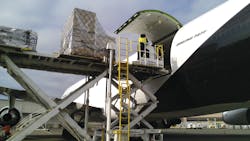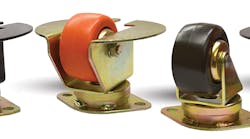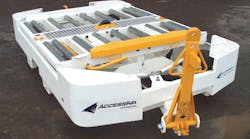This month I would like to discuss an important topic – K-loader preventive maintenance. K-loaders are one of the most important (and expensive) pieces of equipment that many of our companies use.
It is imperative that they operate correctly when needed. One way to help ensure this is to complete thorough PMIs on a properly scheduled basis. Many airlines and ground handling companies conduct scheduled PMIs with their own self-tailored PMI checklists. This helps to ensure that all important items are checked every time that the loader comes in for service.
If your company does not employ such a checklist, you should start a checklist every time the equipment operates. A good source of information is the equipment manual itself; it can help you tailor a program that best suits your company’s needs based on amount and type of usage, climate, etc.
I want to touch on some key components that we've found to warrant close attention during a scheduled service and inspection
Scheduled service should be more than just a quick oil and filter change. A loader has many moving parts that must be maintained to work correctly.
Lubrication is vital to keep many parts running smoothly without premature wear. Grease may be messy, but it is definitely your friend. Important grease points include all pivot points for bridge and elevator scissors, steering pivot points and hydraulic cylinder mounting points. Other places to grease include mounted bearings for roller shafts on both the elevator and bridge.
Some manufacturers use sealed, maintenance-free bearings and some do not. It is important to look carefully for grease fittings and grease every one you see. Also, some loader models use roller chains to operate heli-roll shafts, cargo rollers, etc. These chains should be inspected for wear and tightness. They should be lubricated with a good quality chain lube as well.
An area that often gets neglected is the hydraulic system. Different makes and models use different styles of hydraulic filters. For example, for the return circuit, some use a metal screen-type filter mounted within the hydraulic reservoir, while others use a simple spin on type. It is important to clean or replace these per manufacturer specs.
High pressure filters require attention as well. These are typically of a cylindrical metal screen design mounted within a thick, steel cartridge.
If your loader has recently experienced a failure such as a bad hydraulic drive motor, then all filters should be replaced immediately. Drive motors are notorious for sending nasty little metal fragments throughout the system. These fragments collect in many places and tend to cause hydraulic valves to hang open at the most inopportune time. The lines and hoses should be flushed as well – just to be sure.
Hydraulic hoses should be closely inspected too. If any exterior cracks or blisters are evident, the hose should be replaced.
If you do not have a good hydraulic shop nearby, there are other alternatives. There are some mobile companies that make and replace hydraulic hoses onsite. The prices are competitive, and they do the removal and replacement.
If you are in a remote area, you may have to order hoses from the manufacturer. This may take longer, but if you catch a deteriorating hose early you could already have it in stock.
While checking hoses, it is a good time to do a quick check of hydraulic cylinders. They should be checked for leaking gland seals and worn pivot points. It is also important to check wiring and connections going to all solenoid valves. This is just another place to catch a small issue before it becomes a service failure during an operation.
Another area that requires inspection is lift chains. Some manufacturers use lift chains running over the lift cylinders to raise the elevator. These should be checked for tightness and stretching. They require lubrication as well. If one of these were to suddenly fail, the results could be catastrophic. It should go without saying that these should be closely inspected.
There are many other items that warrant inspection on loaders, such as bogy tire wear, loose electrical relays and components, etc. It is important to spend as much time as possible and be thorough.
One way to make preventive maintenance easier is to start with a clean piece of equipment. This, of course, will make it easier to locate any discrepancies.
K-loaders tend to get pretty dirty. There is usually a striking difference after one has been thoroughly cleaned. A clean loader looks more professional to your customers and tends to make employees take a little more pride in what they are operating. Take the time to clear any trash in the tracks and ropes as this will cause problems.
Preventive maintenance remains an important subject that requires constant vigilance to help our companies and industry prosper.




